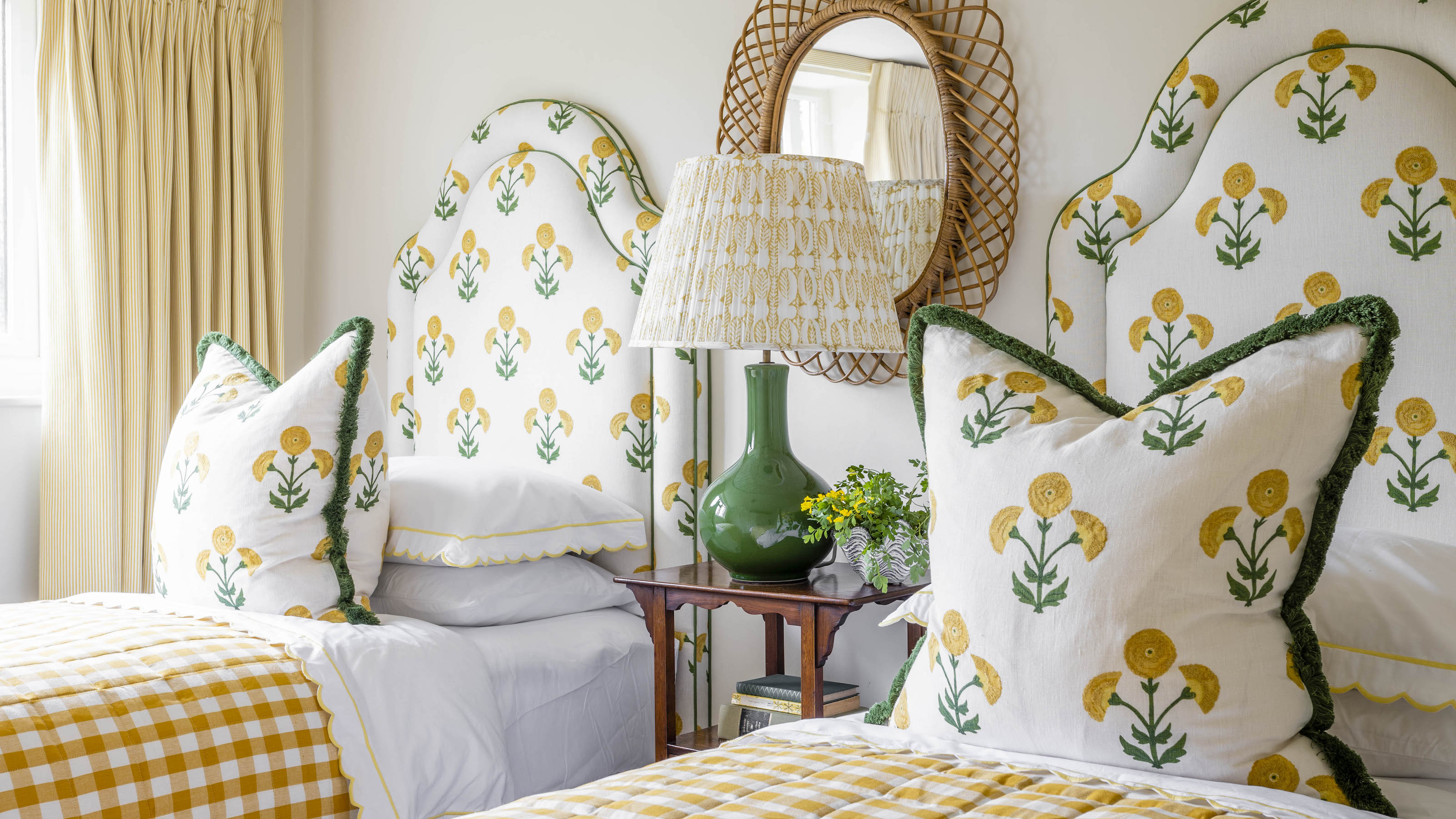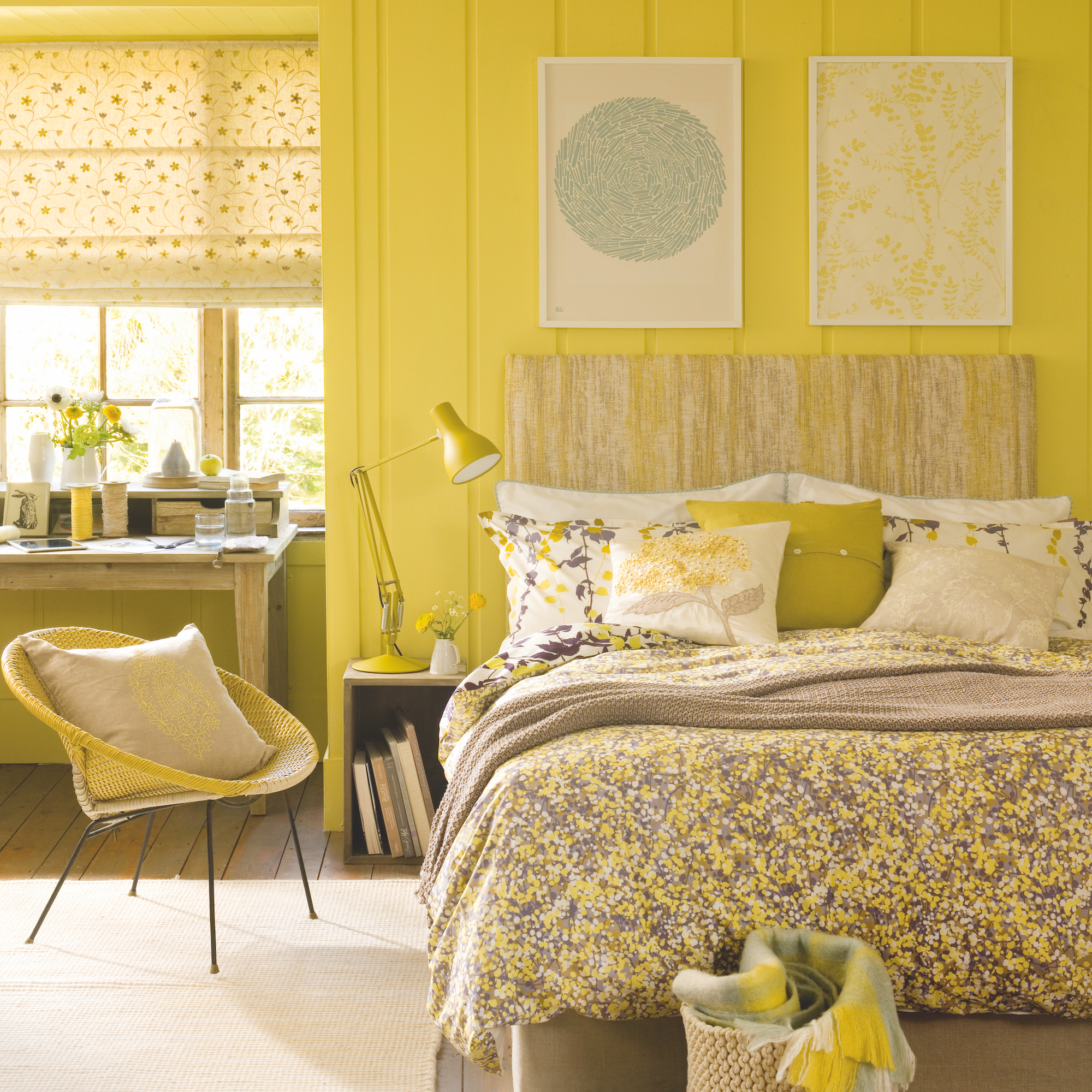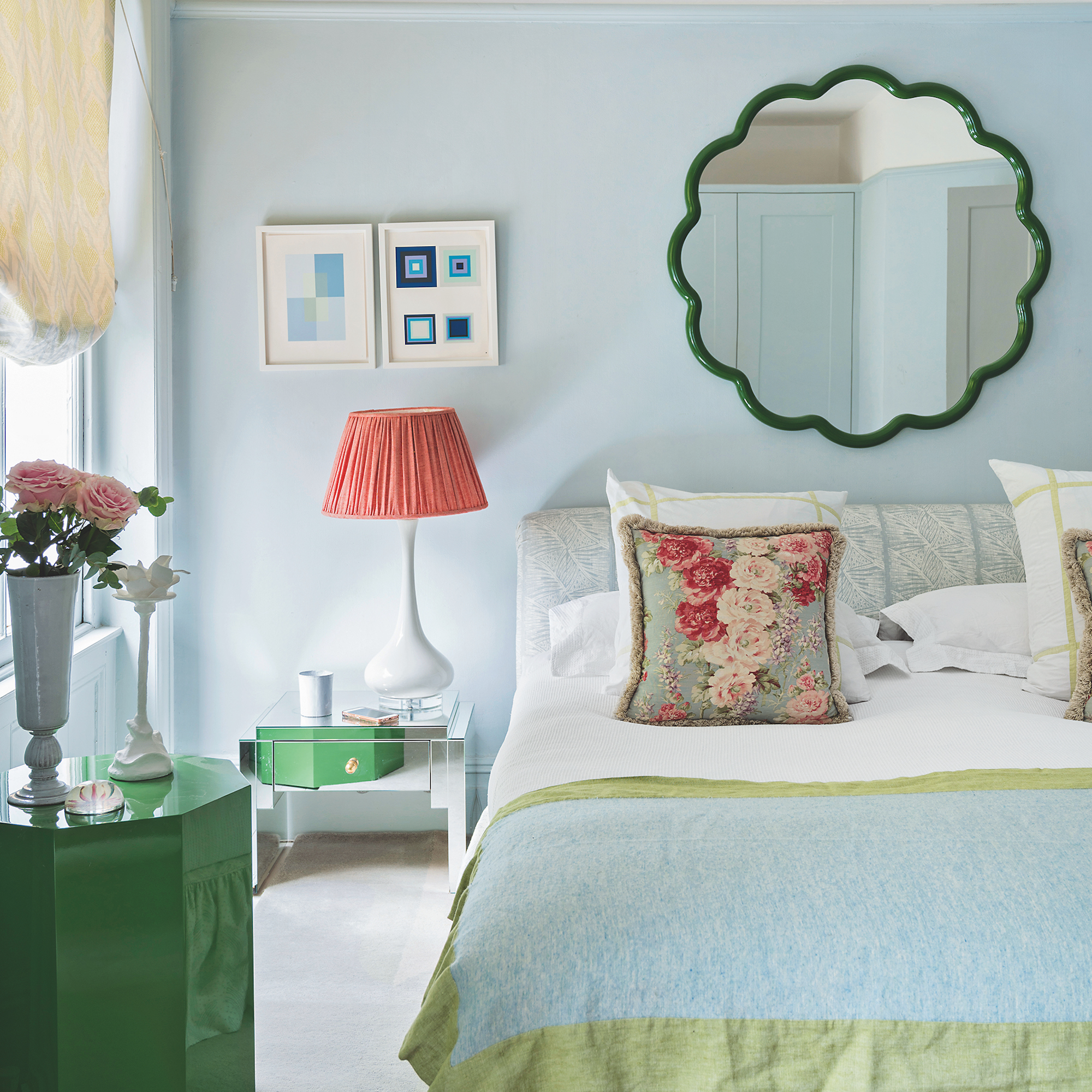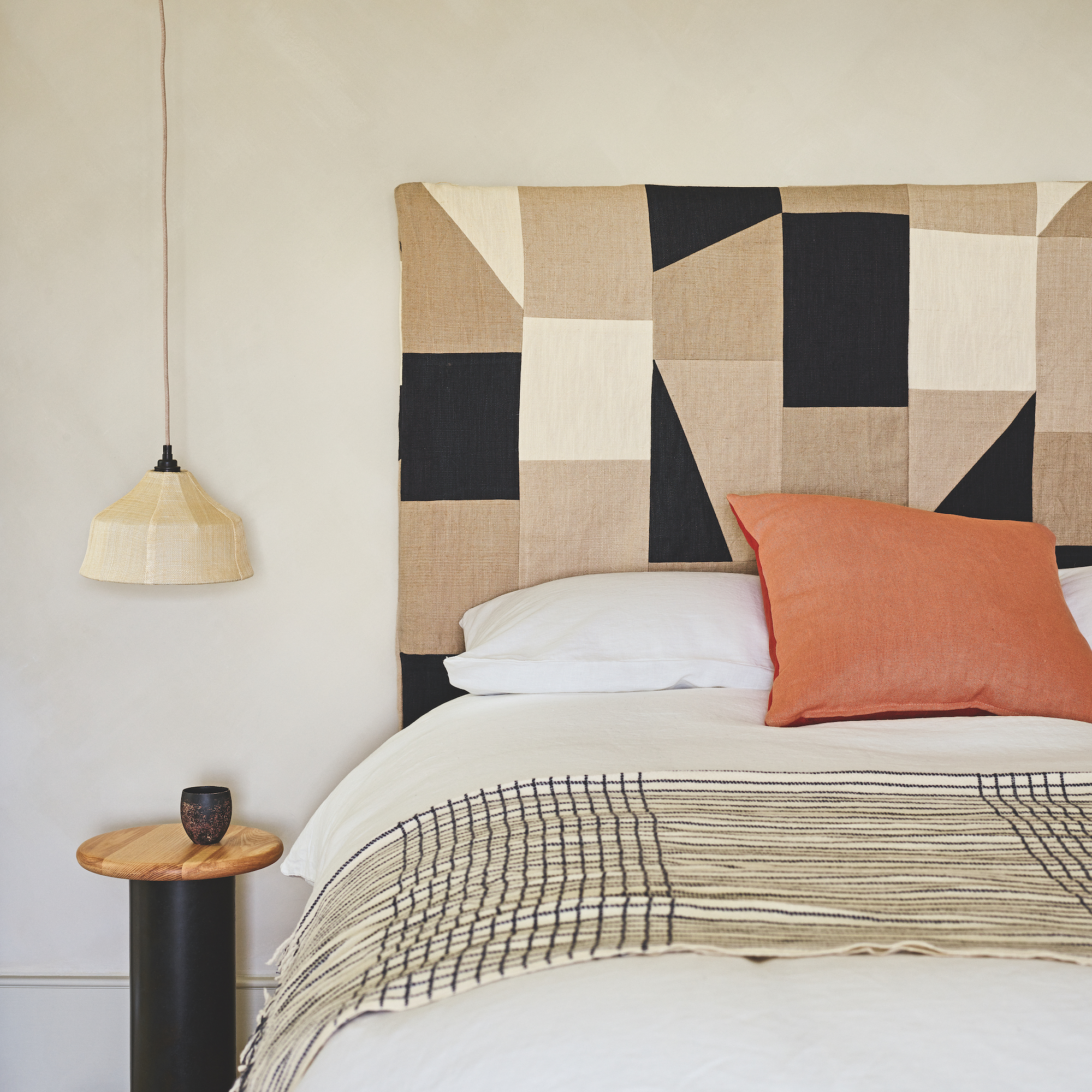The colours that experts recommend filling your bedroom with for a happiness boost every morning
Make waking up a joy with these mood-boosting hues, say colour experts



Soft and serene colours are go-to hues for bedrooms, and that makes sense if you need help winding down and calming cortisol levels before going to sleep. But sometimes you want a lift to start your day and that is where happy colours for a bedroom come in.
Instead of calm bedroom ideas, you can use your bedroom colour ideas to boost the energy in your sleep space, to lift your mood, rev you up for the day, and simply make it joyful place to spend time in.
It’s important to consider the effect colour has on us when we are decorating. ‘Every colour is a light wavelength that radiates a particular energy. When we spend time in a room, we start to absorb the colour energy around us, which in turn affects our mood and emotions. That’s why it’s so important to be conscious of the colours that are in your home,’ explains colour therapy expert Momtaz Begum-Hossain.
‘Spaces that are too minimal with white walls and limited soft furnishings can feel stagnant, with no energy flow. But you don’t need to paint your walls in rainbow colours to enjoy colour in your home.’ she continues.
Happy colours for a bedroom
We’ve talked with colour experts and decorators to discover the happiest colours to fill your bedroom with, so you can start and end the day feeling great.
Yellow

Want to bring sunshine vibes to your bedroom? Then consider yellow bedroom ideas, which in colour psychology is known for its uplifting qualities.
‘This has a lot to do with yellow’s connection to the sun, which naturally promotes positivity. When you catch a glimpse of this happy shade during your day, you can’t help but feel a sense of hope,’ explains colour therapy expert Momtaz Begum-Hossain, who has collaborated with interior designer Amy Wilson from 247 Blinds and 247 Curtains to create happy bedroom colour schemes.
Sign up to our newsletter for style inspiration, real homes, project and garden advice and shopping know-how
Struggle with decision fatigue when you’re planning what outfit to wear in the morning? A yellow bedroom can help with that, too.
‘A positive trait of yellow is that it can help you make decisions,’ explains Momtaz. ‘If you’re overwhelmed by choices, you may be lacking in yellow energy. Surround yourself with yellow soft furnishings to boost your decisiveness and focus.’
‘For the maximum dose of happiness, go for the boldest yellow you can; a strong yellow will work equally well in a neutral pared-back scheme as it will in a dark palette where the contrast will work perfectly,’ says Amy Wilson.
One note of caution: yellow can be overstimulating if you’re sensitive to colour. But there are ways to work round this and still harness its mood-boosting properties.
‘Yellow doesn’t have to be in your face; there are so many tones to choose from to create a peaceful space that's both bright and light that you can treat in a similar way you would with neutrals,’ explains Amy.
‘If you’d prefer a more subtle yellow, combining a softer lemon shade in a bind or curtains would create a lovely gentle scene for a bedroom.’
You can also zone yellow in your bedroom scheme, painting the wall you see when you first wake up – or even the ceiling – in a sunny hue, while keeping the rest of the walls a soft and restful complementary shade.
Green

Love the great outdoors? Then a green bedroom could be your happy place. Studies show that being in green spaces, or even having a view of them from a window, can increase our sense of happiness and wellbeing. Research from the Mental Health Foundation, for example, found that a connection with nature is critical for supporting good mental health and preventing stress.
Biophilic interior design attempts to harness the power of nature within our homes, by introducing natural materials, textures, light and, importantly, colour.
‘The theory of biophilia takes a much more intuitive approach to colour. Think of it as your therapist,’ explains Marianna Popejoy, author of At Home with Nature.
She suggests you imagine transporting yourself to a place where you feel truly happy. ‘Most people are probably going to imagine themselves leaning against a tree in a beautiful meadow on a summer’s day, or lying on an empty beach,’ she says. ‘Asking yourself this question can help you to narrow down the colours in our environment that make you feel the most content. These would be the colours that you’d aim to use in your bedroom design, or in a cosy snug that you retreat to in the evening.
According to Marianna, green in particular is a happy hue that can be a trigger for motivation and enthusiasm.
‘Shades of green are associated with health as they remind us of lush vegetation and natural landscapes,’ she says. ‘Blue and medium greens have been shown to enhance creative performance, whereas dark to medium greens are proven to lower the heart rate, improve blood pressure and alleviate stress.’
Light blue

Light blue is an uplifting colour that can inspire joy and relaxation, which is the perfect mood to set when it comes to bedroom interiors. Research shows that blue bedroom ideas are very popular for these reasons.
‘Sitting next to green on the colour wheel, blue is another calming paint colour for bedrooms, with positive effects on our stress and anxiety levels. In colour psychology, blue is linked to nature and stability often being associated with the sky or the water, both of which provide us with a sense of calmness and relaxation,’ suggests Michael Rolland, paint expert, and managing director at The Paint Shed.
Neutrals

Warm neutrals hit the sweetspot between calm and cosy, bringing a happy vibe to bedrooms without saturating the space with colour.
‘Neutral shades range from soft whites to warm beiges. These colours are able to open up a room and make it feel more spacious as they reflect light from outside sources and bounce it through the room, explains Dr Lindsay Browning, psychologist, neuroscientist and sleep expert at And So To Bed.
‘If you’re wanting to make your neutral bedroom feel a little more warm and cosy, opting for beige neutral tones can create a relaxing environment as these colours are not too intense or saturated, which means they blend in well with the entire room.’

Dr Lindsay Browning is a sleep expert at Trouble Sleeping and author of the self-help sleep book, Navigating Sleeplessness. She has degrees in both neuroscience and psychology and a doctorate from the University of Oxford where she investigated the treatment of insomnia. Dr Browning founded Trouble Sleeping in 2006 and is a Chartered Psychologist and Associate Fellow of the British Psychological Society, a member of the British Sleep Society and a member of the American Academy of Sleep Medicine.
Ultimately, the happiest bedroom colour is the one that makes you feel good – whatever shade that may be. But think about how the tone or saturation of your favourite hue relates to your mood, wellbeing and sleep quality. For example, you may love light and bright white rooms, but opt for a warmer cream or beige tone in your bedroom.
‘At the end of the day, your choice of bedroom colour is down to individual preference. As long as you find your bedroom relaxing and a happy place to be, then you’re likely to sleep well there, whatever colour that is.’

Andrea began her journalism career at Ideal Home and is currently Editor of our sister title, Country Homes & Interiors, which celebrates modern country style. Andrea is passionate about colour and how it can transform both our homes and our sense of wellbeing, and has completed The Power of Colour course with the prestigious KLC School of Design. Andrea's career spans interiors magazines, women's lifestyle titles and newspapers. After her first job at Ideal Home, she moved on to women's magazines, Options and Frank. From there it was on to the launch of Red magazine, where she stayed for 10 years and became Assistant Editor. She then shifted into freelancing, and spent 14 years writing for everyone from The Telegraph to The Sunday Times, Livingetc, Stylist and Woman & Home. She was then offered the job as Editor of Country Homes & Interiors, and now combines that role with writing for idealhome.co.uk.